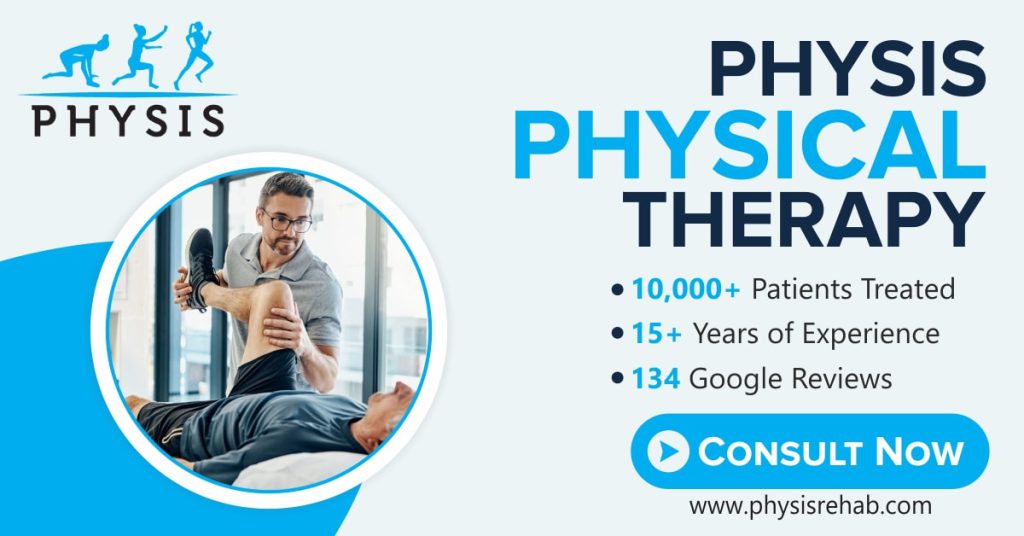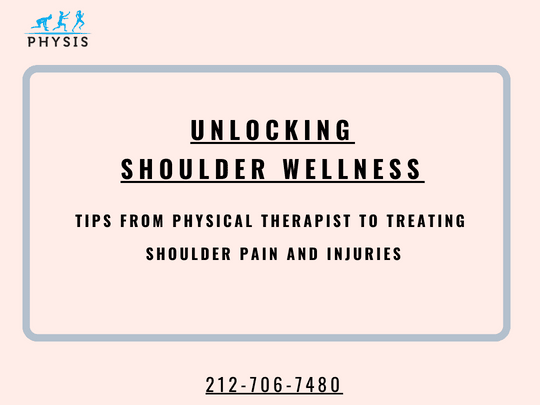Unlocking Shoulder Wellness: Tips from Physical Therapist to treating Shoulder Pain and Injuries
Shoulder pain and injuries can have a debilitating impact on your daily activity and the quality of your life. Shoulder is a complex structure, allowing almost 360 degrees of movement while stabilizing your arm, from making your coffee in the morning to pitching at over 100 mph. This is achieved with the combined activity of multiple ligaments and muscles working together like a well oiled machine. Its strength is also its weakness, because the excess motion it provides, also makes it susceptible to injuries. It is important to assess and treat the exact cause of the shoulder pain with targeted and evidence based exercise to alleviate discomfort and restore function. Here, we will explore some of the best physical therapy methods for treating shoulder pain and injuries.
As previously discussed the shoulder provides almost 360 degrees of mobility and along with the shoulder blade it provides the stability needed during the movements. Given the complexity , It is critical to understand the root cause of the shoulder pain and injury to implement a personalized and effective treatment plan. There are various causes of shoulder pain, some common ones such as rotator cuff strains or tears, bursitis, shoulder dislocation, shoulder subluxation, bicep strains/tears or frozen shoulder. Physical therapy treatments for shoulder pain and injuries are diagnosis dependent.
Manual Therapy – Manual hands on treatment for the shoulder such as passive mobility of the arm, shoulder joint mobilization or soft tissue mobilization are used for shoulder pain and injury to restore range of motion in the arm, relieve tight tissues, alleviate pain, facilitate blood flow and promote healing.
Strengthening – The shoulder joint provides mobility and receives support from the shoulder blade. Targeted strengthening exercises to restore strength to weakened muscles, enhance stability and support at the shoulder, facilitate proper shoulder alignment and improve the function of the shoulder and the shoulder blade complex as a whole. Hence, you will experience a reduction in the pain at the shoulder and healing of the injured area, subsequently causing an improvement in overall function.
Stretching – Targeted stretching exercises are critical in addressing muscle tightness of the shoulder muscles, restoring the balance of the muscles at the shoulder joint and facilitating proper shoulder alignment. Ultimately, this results in reduced instances of overuse, reduction in strain and stress on the labrum, ligaments and tendons, resulting in pain relief.
Posture Correction – Poor posture is one of the common reasons for shoulder injury and pain. Poor posture is present due to muscle imbalance where a group of muscles are tight and overused, while others are weak and lengthened. Identifying and correcting these habits, in conjunction with other treatments, can significantly alleviate shoulder pain and prevent recurrence. Ergonomic assessment is one such service, provided by a physical therapist, where they can evaluate your posture during your daily activities and provide meaningful solutions for long term relief.
Functional training – Task specific training is key in alleviating shoulder pain and injuries with physical therapy. Simulating daily life, with higher resistance and heavier loads, and sport specific training in the later stages of rehab is critical in regaining functional strength and facilitating the return to prior level of function.
Patient education – A key piece in rehabilitation of shoulder pain and injuries. It is important to have an open line of communication between the physical therapist and the patient. Educating the patient on the cause of the pain/injury, advising them on the treatment plan, encouraging their input in goal setting, linking the exercises to patient specific goals and ergonomic awareness is critical in keeping the patient an active participant of their own recovery.
Effective management of shoulder pain and injuries with physical therapy is a comprehensive and individualized approach. Here at NYC arms and shoulder Physical Therapy in midtown Manhattan we strive to provide the best shoulder physical therapy treatments in NYC with a patient first approach. We will provide an in-depth assessment, and the tools and knowledge needed for successful recovery from an injury and maintain a healthy shoulder in the long run.


